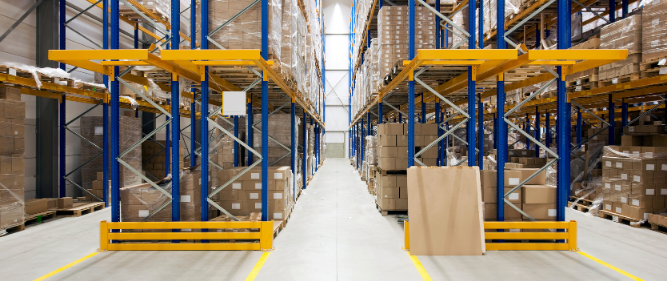E-commerce retail is at an all-time high, according to the U.S. Census Bureau’s latest quarterly report. Total e-commerce sales for 2020 were estimated at $791.7 billion, an increase of 32.4% (±1.8%) from 2019.
While this isn’t exactly unexpected, the COVID-19 pandemic has only sped up e-commerce trends that were already taking place. And that means distribution warehouses — and the workers and technology that power them — are in the spotlight.
This has more companies considering how to best capitalize on this demand, and automated robotics are taking the storage and distribution game to new heights — literally.
What is an automated storage and retrieval system?
An automated storage and retrieval system (ASRS) is a combination of equipment and controls that handle, store and retrieve materials as needed with precision, accuracy and speed under a defined degree of automation. They can vary from smaller automated systems to larger computer-controlled storage/retrieval systems totally integrated into a manufacturing and/or distribution process.
The different types of ASRS fall into three main categories:
- Shelf-based picking, where an entire tray of product is delivered to an operator
- Bin-based picking, where an individual bin or tote is delivered to an operator
- Robotic picking, where robots operate within an enclosed shelving system to deliver goods to an operator
Robotic picking has become increasingly prevalent with advancing technology, including the demand for dedicated ASRS warehouse buildings.
Here’s an example of how that might look: An employee inputs a command via the computer interface, which prompts the system to send a robot picker on a sled into the ASRS warehouse and to the appropriate rack. The robot could then grab the pallet, pull it down, place it on a conveyor and feed it to the employee so that it can be loaded onto a truck with a forklift.
Advantages of an ASRS
These automated systems are popular for a reason — several, in fact.
- Vertical storage capacity — High-rise ASRS buildings can be upwards of 140 feet tall in some cases. Since conventional racking isn’t a factor, you’re not limited to fork truck lift height or aisle width.
- Smaller footprint — The ability to build taller allows companies to expand vertically rather than horizontally, reducing or eliminating the expensive proposition of acquiring more real estate. A high-rise automated warehouse results in an increased product storage density in less real estate. This smaller footprint may also save on permitting and other related costs.
- In-rack fire sprinklers — A common concern with in-rack sprinklers is the risk that employee-operated forklifts could come into contact with, and damage, sprinkler heads. This means companies have to design and pay for structural steel guards to protect the in-rack sprinklers, not to mention costs to repair any sprinkler heads that get damaged. With an automated system, however, the robot is programmed to follow the same path and reach the same marks consistently, eliminating the risk of operator error while maintaining adequate fire protection. This also allows owners to maximize the number of pallets in a smaller building footprint.
- Labor market fluctuations — The growth of e-commerce is only increasing the demand for warehouse and distribution workers, but there are fewer qualified candidates per job due to industry attrition, high turnover, the COVID-19 pandemic and other factors. Owners are having more difficulty finding skilled workers and fork truck operators, making an automated system that much more appealing.
Labor costs aren’t the only potential savings that come with increased automation, even for cold storage warehouses.
Things to consider before investing in an ASRS
Of course, an automated retrieval and storage system may not always be viable, and it doesn’t come without its considerations.
- Greater initial cost — Securing capital approval to invest in this level of automation can be a hurdle for many companies. While you may realize long-term savings with a fully automated warehouse, there is a greater initial investment required to design and build one. However, many companies may incur substantial tax benefits, depending on the tax laws and codes that apply to a particular company. In-rack-supported enclosures, the racking that serves as the frame for the building, are classified as equipment. Therefore, the roof and walls are considered components of an equipment enclosure. This categorization can allow these components to be depreciated at an accelerated rate.
- Longer project timeline — Due to the degree of automation and robotics, a full-fledged ASRS warehouse takes longer to build than a traditional one. Once the rack-supported building is constructed and enclosed, the automation provider typically performs installation and commissioning.
Especially in the food industry, where speed to market is a priority, this longer project schedule can be a challenge. But with proper planning, this technology can yield long-term gains and strategic advantages in the market.
Are the conditions right for your business to invest in an ASRS project? Wondering where to go from here? We can help! Leave your questions in the comments below or email me at foodforthought@stellar.net



